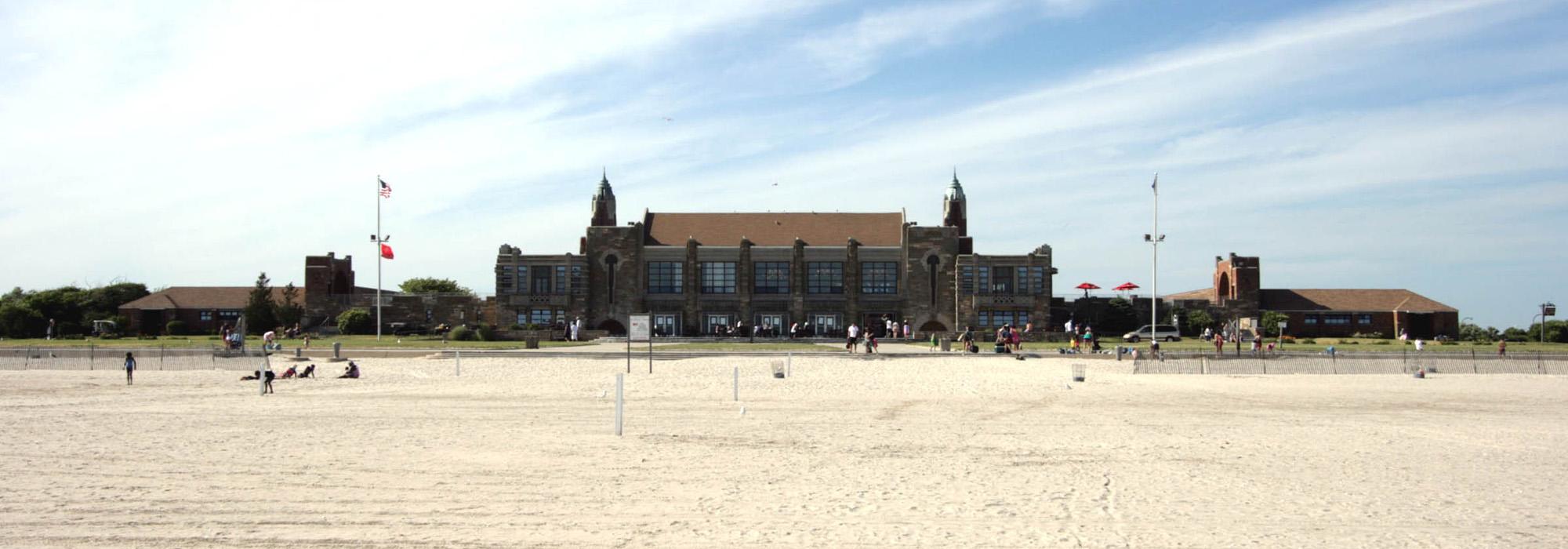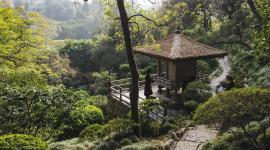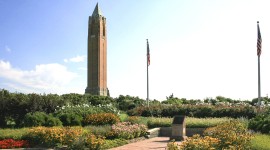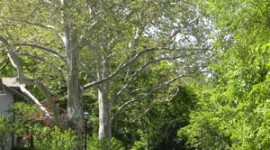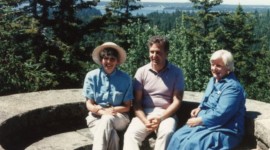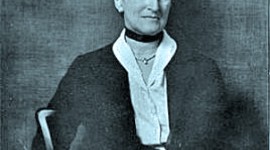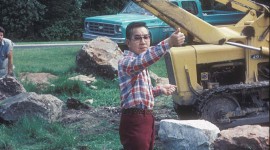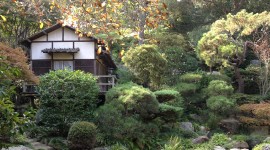The Cultural Landscape Foundation Announces 2012 Landslide®: Landscape and Patronage – Twelve Significant Threatened and At-Risk Landscapes Across the Country
Media Contact: Nord Wennerstrom | T: 202.255.7076 | E: nord@tclf.org
The Cultural Landscape Foundation Announces Landslide® 2012: Landscape and Patronage – Twelve Significant Threatened and At-Risk Landscapes Across the Country
DC's Pennsylvania Avenue - the Nation's Main Street - and New York's Iconic Jones Beach lead Landslide® 2012 - Thematic list focuses on significant landscapes and the visionary patrons who created and/or supported them in CA, DC, IN, ME, MI, NY, TX and VT - includes an Online Photography Exhibition
The Davey Tree Expert Company returns as Presenting Sponsor - American Society of Landscape Architects is Education Partner - Landscape Architecture magazine is Media Partner
Washington, DC (October 3, 2012) - The Cultural Landscape Foundation (TCLF) tomorrow will formally announce the Landslide® 2012: Landscape and Patronage. In 2012, Landslide®, the annual thematic compendium of threatened and at-risk landscapes, focuses on visionary patrons and/or organizations and the sites they helped create and support. The announcement will be made Thursday evening, October 4, at El Museo del Barrio in New York at a reception co-hosted with the Central Park Conservancy (CPC) at which CPC trustee Judith Carson will be honored for her patronage of Central Park’s woodlands, and it precedes a daylong conference Friday, October 5, organized by TCLF and CPC about stewardship of Central Park’s woodlands and urban woodlands nationally. The conference will be followed on October 6-7 by What's Out There Weekend NYC featuring free expert-led tours of landscapes throughout New York City. The 2012 Landslide®sites include Pennsylvania Avenue in Washington, DC – the Nation’s Main Street – New York’s iconic Jones Beach, the Hannah Carter Japanese Garden in Los Angeles, and the Nasher Sculpture Garden in Dallas. Complete details about Landslide® and an online photography exhibition are on the Landslide® 2012 Web site. Landslide® is made possible by Presenting Sponsor The Davey Tree Expert Company, Education Partner the American Society of Landscape Architects and Media Partner Landscape Architecture magazine.
American history is replete with visionary, inspired and willful patrons who supported and shaped beloved and nationally significant estates, parks, plazas and other civic amenities across the country. Without these committed people and organizations, many landscapes we prize would not have come into existence or survive today. A majority of the 2012 sites face the most preventable yet pernicious threat – lack of maintenance – while some could be partially or wholly eradicated. Landslide®, first issued in 2003, has highlighted more than 150 significant at-risk parks, gardens, horticultural features, and working landscapes-collectively, places that embody our shared landscape heritage.
The 2012 Landslide (in alphabetical order by site name):
Cathedral of the Immaculate Conception, Burlington, VT
Patron: Roman Catholic Diocese of Burlington
Burlington’s Cathedral of the Immaculate Conception, completed in 1977, is one of the earliest collaborations between Modernist architect Edward Larrabee Barnes and landscape architect Dan Kiley, and was built to replace the original gothic revival church that burned down in 1972. Kiley’s landscape design – one of a handful realized in his home state – incorporates one of his signature design elements, a grid of 123 uniformly spaced locust trees that screens the cathedral from the bustle of the city. Construction of a proposed bus terminal would shear off a significant portion of the Kiley designed landscape and drastically alter its quality and character.
Fern Dell, Griffith Park, Los Angeles, CA
Patron: Colonel Griffith J. Griffith
At 4,310 acres, Griffith Park is among the largest urban parks in the nation. Its patron, Colonel Griffith J. Griffith, donated the forested canyon lands to the city of Los Angeles in 1896 and continued to shape, steward, and advocate for the parklands until his death in 1919. Fern Dell, a 90-year-old landscape located within the park at its southern edge, blends the natural with the constructed and creates a transition between the park’s wilderness and manicured areas. The 20-acre landscape situated in a spring-fed ravine is the only public fern garden of its size and significance in California. In the early 20th Century, Griffith Park Superintendent Frank Shearer began planting native and imported ferns within the natural ravine. During the Depression, Civilian Conservation Corps artisans and workers who lived in three Works Progress Administration camps within the park enlarged Fern Dell. Regularly scheduled, skilled maintenance of the landscape’s built and natural features ended in the 1970s, resulting in its steady deterioration.
Garland Farm, Mount Desert, ME
Patron: Beatrix Farrand
Garland Farm was the last home and garden of the pre-eminent landscape architect Beatrix Farrand, who lived there from 1955 until her death in 1959. Farrand, famous for her work at Dumbarton Oaks in Washington, DC, and the only female founding member of the American Society of Landscape Architects, created a variety of all-season gardens at Garland Farm that employed her signature design tropes, including a sense of intimacy, sophisticated planting schemes and the judicious use of garden ornament. Although a significant example of her work, the gardens languished somewhat under subsequent ownership until the Beatrix Farrand Society purchased the property in 2003. The Society undertook a partial restoration between 2007 and 2011, but financial difficulties threaten the completion of the project.
Hannah Carter Japanese Garden, Los Angeles, CA
Patron: Edward W. Carter
According to the Los Angeles Times, the Hannah Carter Japanese Garden, owned by the University of California Los Angeles, is “among the rarest examples of post-World War II Japanese private gardens in this country.” It was created in 1959 for the original owner, George Guiberson, by Nagao Sakurai, once Chief Gardener at Japan’s Imperial Palace in Tokyo, and garden designer Kazuo Nakamura. The steep 1.5-acre site incorporates an earlier A. E. Hanson design and is modeled on sites in Kyoto. UCLA acquired the garden in 1964 courtesy of a gift from Edward W. Carter, a former chair of Regents (and a founder of the Los Angeles County Museum of Art). The gift was updated in 1982, naming the garden in honor of Carter’s wife and requiring UCLA to maintain the garden “in perpetuity.” UCLA officials waited until the Carters were deceased and then, without notifying their heirs, persuaded a judge to overturn the gift’s “in perpetuity” terms and listed the property for sale in early 2012. In May 2012, heirs to the Carter estate filed a breach of contract lawsuit against UCLA to uphold the terms of the gift, and in late July a Superior Court judge issued a preliminary injunction temporarily halting the sale. The garden’s fate remains uncertain until the completion of a currently scheduled hearing to begin in May 2013.
Innisfree Garden, Millbrook, NY
Patron: Walter and Marion Beck
During a fifty-year period beginning in the 1930s, landscape architect Lester Collins transformed Walter and Marion Beck’s Millbrook estate into a Modernist masterpiece. The site-specific gardens at Innisfree reflect Collins’ design training, minimalist sensibilities, and interest in Asian and Picturesque landscape design principles. The Innisfree Foundation, createdin 1960, andoriginally chaired by Collins, was established to steward the property in perpetuity and to open the gardens to the public. However, at the foundation’s start, the Beck estate was indebted, leaving the foundation without an endowment and forcing it to sell a portion of the original acreage. Innisfree currently relies on a large amount of donated labor, by administrators that have exhibited long-term dedication and ties to the property, butin the future, it willlikely have to budget for more paid staff. Despite exceptional investment performance and constrained expenditures, the foundation is spending down on its endowment more than they feel is prudent. While the foundation’s short-term legacy is secure, uncertaintyabout long-term financing continues to affect itsgradual transition from private endeavor to public non-profit.
Isham Park, New York, NY
Patron: Julia Isham Taylor
In 1911, Julia Isham Taylor donated six acres of her father’s 19th-century estate to the city of New York for use as a public park honoring her father William Ishamand to conserve a bucolic spot with commanding, panoramic views to the Hudson and Harlem River Valleys at Manhattan’s quickly developingnorthern tip. Further gifts from Taylor and other family members and acquisitions through 1927 brought Isham Park to its current 20 acres. Several landscape architects and architects including AymarEmbury, II, Gilmore Clarke and Michael Rapuano (the latter two designed the Brooklyn Promenade) helped create the park’s circulation patterns, paths and amenities. In recent years, invasive trees have been allowed to obstruct important view corridors and obscure important designed features of the park. The increased sense of enclosure that the trees give the park, paired with the degradation of many of the Works Progress Administration-era stone steps, terraces, paths, and retaining walls that need resetting and refurbishment, have substantially altered and diminished the patron’s intent.
Jack London Lake, Jack London State Historic Park, Glen Ellen, CA
Patron: Jack London
Between 1905 and 1916, author Jack London turned 1,400 acres in California’s Sonoma Valley into a working ranch on which London experimented with ecological agronomy. London actively shaped the landscape, terracing hillsides into arable land and damming a stream for irrigation and storm-water relief. This action led to the first water-rights legal battle in northern California, a lawsuit that London won. The dam also created a five-acre, fresh-water lake that London stocked with catfish and bass and for which he designed a log bathhouse and dock. The lake, once a favorite gathering place for London and his guests, was a highlight within the Jack London State Historic Park, established in 1960. After California State Parks took over management of the property, the lake went into serious decline due to a prolonged lack of maintenance. Today the dam is cracked and leaking, the lake silted in and covered with fish-suffocating algae, and the irrigation system clogged by sediment. In 2006 The Valley of the Moon Natural History Association (VMNHA) established the Jack London Lake Alliance to repair the dam, dredge the lake, and restore riparian areas, though fundraising efforts were temporarily suspended when the park was listed among the California State Parks facing closure due to California’s state budget crisis. The VMNHA did secure a five-year contract to operate the park (beginning May 1, 2012), reinvigorating restoration efforts that aim to complete the project within the next four years.
Jones Beach State Park, Wantagh, NY
Patron: Robert Moses
Jones Beach State Park is one of the most-visited public spaces in New York City's metropolitan area, known for its 6.5 miles of white-sand beaches that stretch into the Atlantic Ocean. Conceived by Robert Moses in the 1920s, it was the highlight of an extensive network of regional parklands and parkways that became part of the nation's first consolidated state park system. It was also a model for Moses' later work in New York City. The large-scale effort involved in constructing the landscape and the attention to design detail was unprecedented, and Jones Beach reinvented the meaning of "public beach." Working on the Jones Beach project was a team of employees at the regional State Park Commission who included: Earle Andrews, the project’s chief architect and engineer; landscape architect, Clarence C. Coombs, who is credited with designing the circulation system as well as the landscape; engineer Herbert Magoon, who designed the park’s most architecturally ambitious structures (like the water tower and west bathhouse); and Arthur Howland who, as the Commission’s chief engineer, was the project’s general manager. Over the years, funding shortages, deferred maintenance, and a lack of comprehensive preservation planning for the site has led to an incremental yet significant loss of integrity.
Nasher Sculpture Garden, Dallas, TX
Patron: Raymond and Patsy Nasher
The Nasher Sculpture Center, which opened in 2003, contains a 1.5-acre sculpture garden designed by PWP Landscape Architecture and a one-story museum designed by architect Renzo Piano that houses the celebrated Modern art collection amassed by Dallas real-estate developer Ray Nasher and his wife Patsy. The sculpture garden, which showcases works by significant artists including Richard Serra, James Turrell, and Auguste Rodin, features manicured lawn, 170 trees, and three water features. The landscape architecture and architecture were meticulously calibrated to allow natural sunlight into the garden and structure, while screening the artwork and plantings from damage by the sun’s most direct rays. In 2010, construction began on a 560-foot tall, glass clad skyscraper/condominium complex across the street from the Nasher. The Museum Tower casts a giant shadow over the area and its glass skin reflects intensified sunlight into the museum and garden, which is both endangering the artwork and negatively impacting the green space. Mediation between representatives of the city, the Nasher Center, and Museum Tower has yet to resolve the controversy.
Pennsylvania Avenue, Washington, DC
Patron: Pennsylvania Avenue Development Corporation
Pennsylvania Avenue, created in 1792 as Washington’s central thoroughfare and today a National Historic Site, was a significant element of Pierre Charles L’Enfant’s 1791 plan for the Federal City. The 1.2-mile long stretch between Capitol Hill and the White House, the nation’s premiere ceremonial space, is a symbolic and physical link between the legislative, judicial and executive branches of government. After more than a century-and-a-half of degradation, President Kennedy established a council to revitalize the avenue, and following the council’s 1964 report, the Pennsylvania Avenue Development Corporation (PADC) commissioned significant landscape architects, including M. Paul Friedberg, Oehme, van Sweden & Associates and Sasaki Associates to design significant improvements along its expanse. Unfortunately, after decades of improvements the Avenue has again fallen into disrepair, amenities are broken, trees have been cut down and not replaced, water features at Pershing Park and other sites operate infrequently, and the Avenue is littered with unsightly security planters. Moreover, the Historic Site period of significance – 1791 to 1962 – does not include PADC’s work, leaving it open to unsympathetic change.
Riverbank Park, Flint, MI
Patrons: Army Corps of Engineers
In the early 1970s, the firm of Lawrence Halprin & Associates, including architect Steven Holl (who was then in Halprin’s employ), was commissioned to design a linear riverfront park in Flint, Michigan, that both tied the river into the urban setting while solving an Army Corps of Engineers flood control challenge. The terraced park, completed in 1979, comprises five interconnected, block-long spaces featuring canals and other water elements, an amphitheater, and market stalls. The award-winning park represents Halprin’s pioneering 'landscape-as-infrastructure' approach to design, found in his other projects such as the FDR Memorial (Washington, DC), Freeway Park (Seattle, WA) and the Portland Open Space Sequence (Portland, OR). Today, the park is threatened by the deteriorating condition of the Hamilton Dam, which necessitates low-flow conditions that keep the park’s channels, pools and fountains dry. Deferred maintenance and competing redevelopment agendas also threaten the park’s integrity.
Thieme Drive, Fort Wayne, IN
Patron: Theodore F. Thieme
Founded in 1911, Thieme Drive Boulevard and Park are two of Fort Wayne’s earliest efforts at riverfront improvement and were listed in the National Register of Historic Places in 1984. They resulted from the visionary efforts of philanthropist Theodore F. Thieme, who hired landscape architect George E. Kessler to design a Beaux-Arts park on a former dumping ground near the St. Mary’s River. This initial commission prompted Kessler to create an extensive, integrated park system for Fort Wayne. Thieme Drive has deteriorated since a devastating flood in 1982. The erection of flood walls, levees, and berms by the Army Corps of Engineers along other parts of the river have led to increased flooding along the boulevard, and a proposed 10-foot high, 1,000-foot long concrete wall would further negatively impact the drive.
Landslide® is one of TCLF's many initiatives that collectively highlight the importance of the nation's rich and diverse landscape legacy. TCLF also features What's Out There®, a free, searchable online database of the nation's designed landscapes; Pioneers of American Landscape Design® with extensive biographies and profiles of hundreds of practitioners, well-illustrated oral histories with significant landscape architects and encyclopedic publications; along with symposia, books, and lectures.
"Each year 'Landslide' highlights different aspects of our landscape legacy to make that living heritage visible," said Charles A. Birnbaum, TCLF Founder and President. "In 2012 we focus on patrons and the places they helped create. In the Nation’s Capital and around the country, patronage is intrinsic to the creation and stewardship of great designed landscapes."
"Davey is proud to support and recognize notable landscapes and trees across the country. These spaces enhance our environment and provide us with numerous benefits that better our lives and communities everyday," Sandra Reid, Manager, Corporate Communications/Marketing, The Davey Tree Expert Company.
About The Davey Tree Expert Company
The Davey Tree Expert Company (www.davey.com), with US and Canadian operations in 45 states and five provinces, provides a variety of tree services, grounds maintenance, and consulting services for the residential, utility, commercial, and government markets. Founded in 1880, Davey is employee owned and has more than 7,000 employees.
About the American Society of Landscape Architects (ASLA)
Founded in 1899, ASLA is the national professional association for landscape architects, representing more than 15,000 members in 48 professional chapters and 68 student chapters. The Society's mission is to lead, to educate and to participate in the careful stewardship, wise planning and artful design of our cultural and natural environments. Members of the Society use their "ASLA" suffix after their names to denote membership and their commitment to the highest ethical standards of the profession. Learn more about landscape architecture online at www.asla.org.
About Landscape Architecture magazine
Founded in 1910, Landscape Architecture magazine is the publication of the American Society of Landscape Architects. It is published each month for more than 22,500 subscribers (ABC) and newsstand sales. The mission of the magazine is to elevate the practice of landscape architecture by providing timely information on built landscapes and on new techniques for ecologically sensitive planning and design.
About The Cultural Landscape Foundation (TCLF)
The Cultural Landscape Foundation (www.tclf.org) provides people with the ability to see, understand and value landscape architecture and its practitioners, in the way many have learned to do with buildings and their designers. Through its Web site, lectures, outreach and publishing, TCLF broadens the support and understanding for cultural landscapes nationwide to help safeguard our priceless heritage for future generations.
# # #



